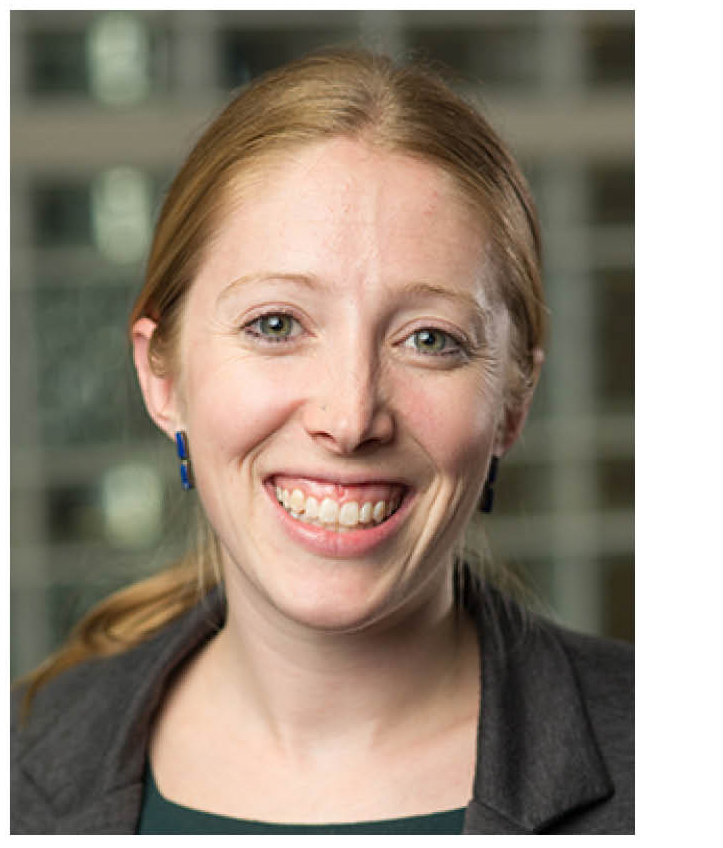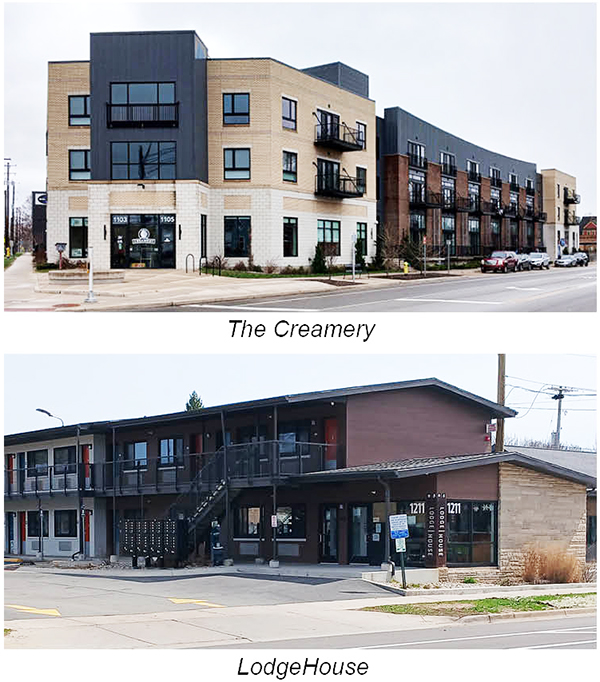
Since 2021, Emily Petz has served as Community Development Coordinator and now Community Development Project Manager at the Upjohn Institute. Her work entails managing the Southwest Michigan Regional Housing Partnership, multiple housing plans, and grants from the Michigan State Housing Development Authority (MSHDA). Emily recently sat down with Institute editor Ben Jones to discuss the various approaches that organizations in the Kalamazoo community are taking to address the need for more housing in the city and county. Here is a partial transcript of their conversation.
Looking at Kalamazoo County, would you say that there is an acute shortage of housing?
In Kalamazoo County alone, we have identified a need for 7,770 housing units by 2030, and those would cost around two billion dollars to build. We just updated the plan to include the impact of the BlueOval project in Marshall [the Ford BlueOval Battery Park Michigan plant, expected to create 1,700 local jobs]. This development is estimated to increase the number of units needed by 2030 to around 8,000.
Is the shortage an issue only for certain segments of the housing market, or for the entire market?
It really impacts everyone. We need, all types and price points—we need more of everything. But I say that with a caveat, as those making $50,000 or less—especially from the research that we’ve done in Kalamazoo County—are more significantly overburdened, and it impacts their lives more dramatically.
When we determine whether something is affordable for someone, we look at, “How much are they paying?” That includes utilities and taxes, whether they’re renting or they own a home, and all their payments to live there. If they’re paying more than 30 percent of their gross take-home income, then they’re considered financially stressed or overburdened. And if they’re paying more than 50 percent, then they’re severely overburdened and very vulnerable to almost complete destabilization if there is a significant life event. That’s how we get people who are unhoused.
When we did our unhoused survey for the Kalamazoo County plan, we found that a majority of those who are unhoused previously were renting. Something happened. They didn’t have family or other support systems to support them during that challenging time, and it snowballed into being completely without shelter.
In light of that, what sorts of efforts are underway in the Kalamazoo area to help solve the shortage and address the high cost of housing?
Mary Balkema [director of the Kalamazoo County Housing Department] has just been pretty busy. Some of the things that they’re doing, especially the Housing Millage, are huge. [The Kalamazoo County Housing Millage has allocated more than $26 million to housing development and supportive services.] It’s pretty unique. And I think Kalamazoo should be proud that we have that established, and that’s been helping fill gaps in projects within our community.
LISC [Local Initiatives Support Coalition] is working on creating a revolving loan fund within the Kalamazoo area that will help provide more patient, flexible capital to housing projects. “Patient” capital is important for housing projects—especially for smaller or new developers. Projects can change a few times before they are ready to close, especially with the changing construction prices. So having a lender that believes in the project and can handle the changes is vital to success.
Who are some of the other players involved in grappling with housing needs in Kalamazoo County?
There are lot of entities that have been working on housing issues. I will just name a few. So, Kalamazoo Forward Ventures has a program to support financing for minority developers. Community Homeworks has a tool share library that they’re just about to kick off, which would be very helpful for homeowners in having the support and tools they need to make at-home repairs, and they also provide education on how to do the repairs. The city has been updating its zoning, and accessory dwelling units are now allowed. They have preapproved housing plans for infill development, which removes barriers for costs, ideally for local developers who want to invest in their community.
Additional agencies doing this work in Kalamazoo and in Kalamazoo County are Housing Resources Inc., KNHS [Kalamazoo Neighborhood Housing Services], ISK [Integrated Services of Kalamazoo], the Continuum of Care, and a lot of other nonprofits who are working really hard with very limited resources, and I’m sure they could do a lot more with additional funding. The Homebuilders Association of Western Michigan partnered with KNHS and LISC to build infill housing using the city’s preapproved housing plans with support from the Foundation for Excellence. This is a great example of the collaboration and coordination that is needed to solve these complex problems, which require all hands on deck.
The city is also working on a master plan update, and we’re going to be helping with some housing plans for the city as well. There is a lot of community engagement that’s tied to this master plan process, this visioning of, “How do we want to see and dream of our future?”
Are these efforts paying off?

I think so. Some of these efforts are brand new, so they haven’t had time to really have the benefits of some of the labors. But I’ve seen some pretty innovative projects that have come through with a lot of collaboration and community support. The Creamery is a good example. That project has a mix of incomes. It also provides child care, a vital community need. That was a particularly challenging project to get to the finish line—I was involved in that project when it was going through the Michigan Economic Development Corporation.
Walbridge Common [in the River’s Edge District] is another example of a developer trying to be innovative and meet the community’s needs. There are multiple ranges of housing available, one of which is a micro unit that goes for about $600 a month. They are small, but these units were ultimately reverse engineered to get that price point, with a common kitchen and a cooperative community focus.
I could go through quite a few projects, but I will end with one close to my home: the Knights Inn Kalamazoo motel conversion. It’s now called the LodgeHouse, and it is a great example of the community coming together to transform a motel into supportive housing to help people with the transition from homelessness into affordable rental, which is a missing rung in our ladder of housing. I love that project, and I think every neighborhood should have its own LodgeHouse version. We need to learn from our mistakes and not concentrate similar incomes. Diversity of incomes and ethnicities is what makes our communities beautiful, complex, and rewarding.
